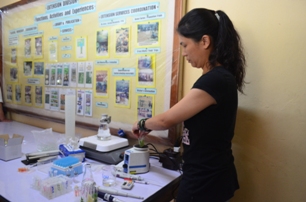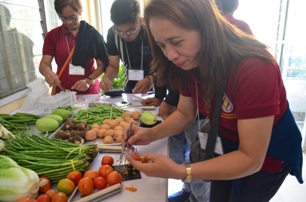
OPs and CMs are the most common pesticides used in vegetable production because of their cost-effectiveness and bioefficacy. However, according to the World Health Organization (WHO), human exposure is possible when residues of these pesticides are eaten.
Originally developed by the Taiwan Agricultural Research Institute (TARI), the technology, called Rapid Bioassay for Pesticide Residues (RBPR), is a highly sensitive rapid detection tool for OPs and CMs. It can detect presence of the said pesticides to as low as 0.004 ppm for dichlorvos and 3.4 ppm for methomyl.
Dichlorvos is an organophosphate widely used as an insecticide to control household pests, in public health, and protecting stored products from insects, while methomyl is a highly toxic carbamate insecticide.
The project, funded by the Philippine Council for Agriculture, Aquatic and Natural Resources Research and Development of the Department of Science and Technology (DOST-PCAARRD), also covers the monitoring of vegetables from markets, outlets, trading posts, and farmer’s fields in Benguet, Laguna, Quezon, and Metro Manila. Vegetables for chopsuey and pinakbet are given priority due to the known intensity of pesticide application on these crops.

RBPR, along with other DOST-PCAARRD’s leading R&D initiatives in the agriculture, aquatic, and natural resources (AANR) sectors, will be featured during the National Science and Technology Week (NSTW) on July 25-29 at the Council’s complex. This year’s NSTW adopts the theme, Juan Science, One Nation.
The Council will also celebrate its fifth anniversary on July 28, 2016. The National Symposium on Agriculture and Aquatic Resources Research and Development (NSAARRD) will also be conducted on July 27, 2016 wherein the winning papers will be awarded. The NSAARRD showcases the most outstanding contributions of individuals and institutions in improving the state of the AANR sectors through research and development.
